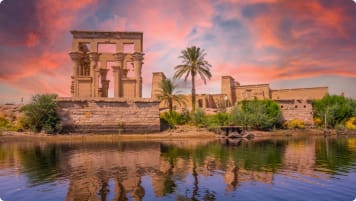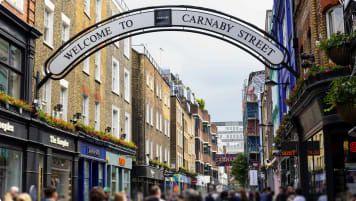Uncovering Ancient Egypt: What we can learn from Egyptologists
In this article, we will discover some of the pioneers of Egyptology, the great archaeologists, excavators and linguists who have helped us explore, understand and protect Ancient Egypt and its heritage.
22 Nov 19 · 17 mins read
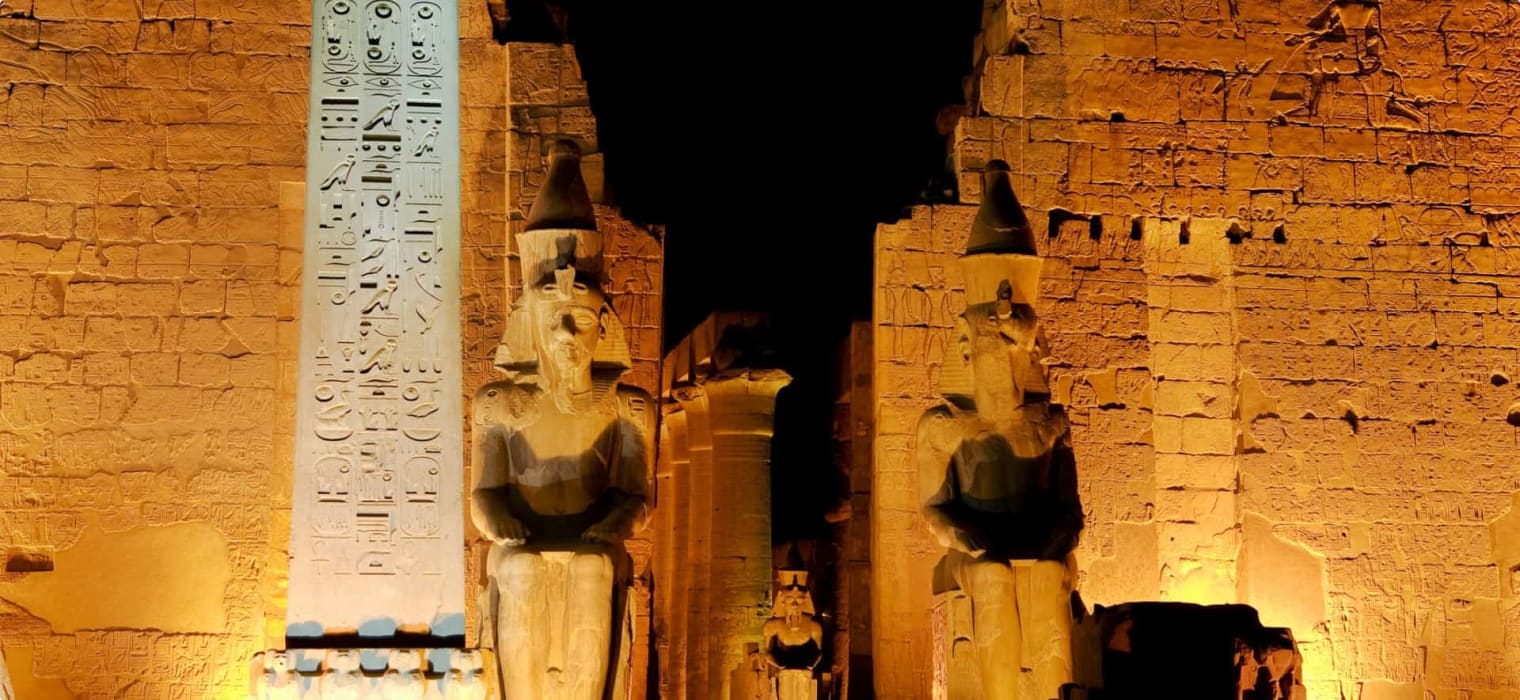
Discovering Ancient Egypt: The Pioneers of Egyptology
Archaeology is the study of the human past through material remains or objects. These material remains or objects are like clues that can help us understand how and why human behaviour has changed over time and how civilisations began and ended. Over the years, historians, scientists and amateur archaeology lovers have been fascinated by Ancient Egypt and it remains the subject of much exploration and study. World leaders, aristocrats, scholars, linguists, excavators and specialists have travelled to Egypt to try and make sense of its past and to explore those historical clues left behind in the form of pyramids, sacred tombs, hieroglyphics and other artefacts. In fact, the study of Ancient Egypt is so expansive that it has become an academic discipline in its own right: Egyptology. An Egyptologist is any archaeologist, historian or linguist who specialises in the scientific study of Ancient Egypt and its antiquities.
In this article, we will discover some of the pioneers of Egyptology, the great archaeologists, excavators and linguists who have helped us explore, understand and protect Ancient Egypt and its heritage. What they discovered has informed our knowledge and provided a clearer and richer image of what the past might have looked like.
This article is inspired in part by The Great Archaeologists edited by Brian Fagan (Thames & Hudson 2014) as well as other resources linked throughout the article. This article acts as a backgrounder for our small group tour of Egypt but may also be of interest to those particularly intrigued by archaeology and discovering more through private guided tours. For our full list of archaeology tours, please click here. For further information on Egypt as a travel destination and Egypt small group tours all information can be found here.

Early Egyptology
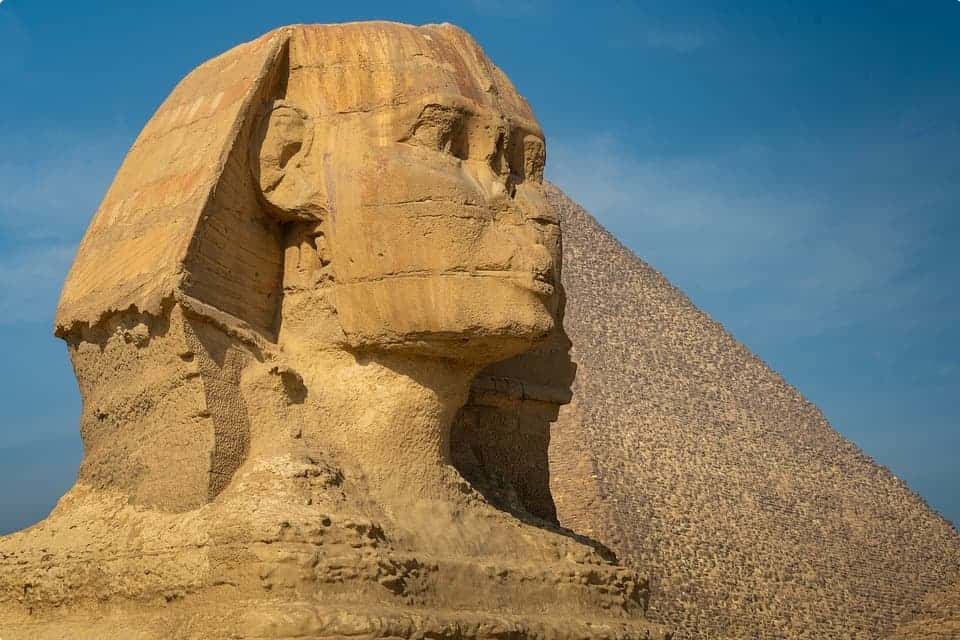
The first Egyptologists were, in fact, the ancient Egyptians themselves, who worked to restore buildings, tombs and temples. Thutmose IV ruled from 14th century B.C. when the Egyptian civilisation was around two millennia old and is credited with restoring the Sphinx. At the time, the Sphinx was around 1,000 years old and it is said that Thutmose IV was prompted to restore it after having a vivid dream. He then had the details of the dream that inspired the restoration carved on the Dream Stele, an epigraphic stele erected between the front paws of the Great Sphinx of Giza. Less than two centuries later, Prince Khaemweset, the fourth son of Ramses II, gained fame for restoring ancient buildings, including some pyramids.
Many of the ancient Greeks, such as Herodotus, Strabo and Diodorus Siculus, gave the first historical accounts of Egypt. An Egyptian priest from the 3rd century named Manetho wrote Aegyptiaca (History of Egypt) in Greek. Aegyptiaca is a chronology of the pharaohs of ancient Egypt. It is thought that Manetho completed the work at the request of Ptolemy II Philadelphus and it has become an invaluable resource for contemporary Egyptologists. Today, one can still note the impact of Aegyptiaca in the way Egyptologists divide the dynasties of the Pharaohs and it is said that the French explorer, Jean-Francois Champollion (whose work shall be discussed later in this article) would always hold a copy of Manetho’s lists in one hand while trying to decipher hieroglyphs.
Modern Egyptology
While some people travelled to Egypt in the Middle Ages, particularly Cairo and its environs, modern Egyptology is considered to have begun with Napoleon Bonaparte’s invasion of Egypt in the late 18th century (1798-1801). The event sparked European interest in Egypt and its past and Napoleon’s invasion force included numerous scientists, linguists, scholars and geographers who became fascinated by the ancient civilisation and all its treasures. In the following section, we will look at some of the most well known discoverers of Ancient Egypt during this period.
Giovanni Battista Belzoni (1778-1823)

Often described as eccentric and fame-hungry, Giovanni Battista Belzoni was an Italian explorer, inventor, archaeologist and pioneer of Egyptology. Born in Padua, he initially worked as a barber, like his father, before moving to Rome when he was 16 to study hydraulics. However, French occupation of the city forced him to leave Rome in 1798, and he eventually made his way to England where he met and married Englishwoman, Sarah Bane. Belzoni stood at over 2 metres tall and used his powerful physique to find a job with the circus. He and his wife then spent much of their time on the road, with Belzoni performing as a strongman, magician and juggler.
After leaving the circus in 1815, Belzoni and his wife travelled to Cairo where he showed a hydraulic machine he had invented to Mohammed Ali, the Pasha of Egypt. While the Pasha was intrigued, he did not take up the design, leaving Belzoni somewhat at a loss. However, his curiosity of Cairo and Egypt had already been sparked. Luckily, on the recommendation of the Swiss explorer, J. L. Burckhardt, Belzoni was commissioned by Henry Salt, the British consul to Egypt, to gather Egyptian treasures that could then be sent back to England and displayed in the British Museum. Belzoni set off to the Ramesseum at Thebes where he recovered, with great skill, the 7-ton bust of Ramesses II, which is called ‘the Young Memnon’. It took Belzoni almost three weeks and 130 men to tow the colossal bust to the river, to be shipped to England.
In February 1817, Belzoni began making his way to Abu Simbel, the site of two temples built by Ramses II. Here, he spent weeks removing 12m of sand from the carved rock face which eventually revealed a doorway, However, Belzoni was disappointed to discover that there were no portable antiquities he could take away with him. Belzoni decided to focus his efforts on the Valley of the Kings where he found the tombs of Amenhotep III, Ramses I, Ay and Merneptah. On 16 October, 1817, Belzoni made one of his greatest discoveries: the tomb of King Set I, Ramses I’s son. The tomb is the largest and most spectacular of the tombs in the Valley of the Kings, with incredible carvings and decorations. On top of this, much to Belzoni’s delight a great treasure lay in the tomb: Seti’s aragonite sarcophagus, which was taken to Sir John Sloane’s museum in London. The tomb is often referred to as ‘Belzoni’s tomb’ because of this discovery.
The next year, Belzoni became the first European to enter the innermost chambers of Khafre’s pyramid at Giza. The entrance to the chambers was deliberately misleading to confuse those who tried to enter but Belzoni is said to have used his engineering genius to make his way in. After encountering some trouble with the men who worked for the French Consul-General, Bernandino Drovetti (and were interested in securing antiquities to display in France), Belzoni left Egypt for good. In 1820 he wrote Narrative of the Operations and Recent Discoveries Within the Pyramids, Temples, Tombs, and Excavations in Egypt and Nubia and in 1821, he exhibited his many findings in Piccadilly, London. He left England again to investigate Timbuktu but contracted dysentery while in Gwato and died on 3 December 1823, at the age of 45.
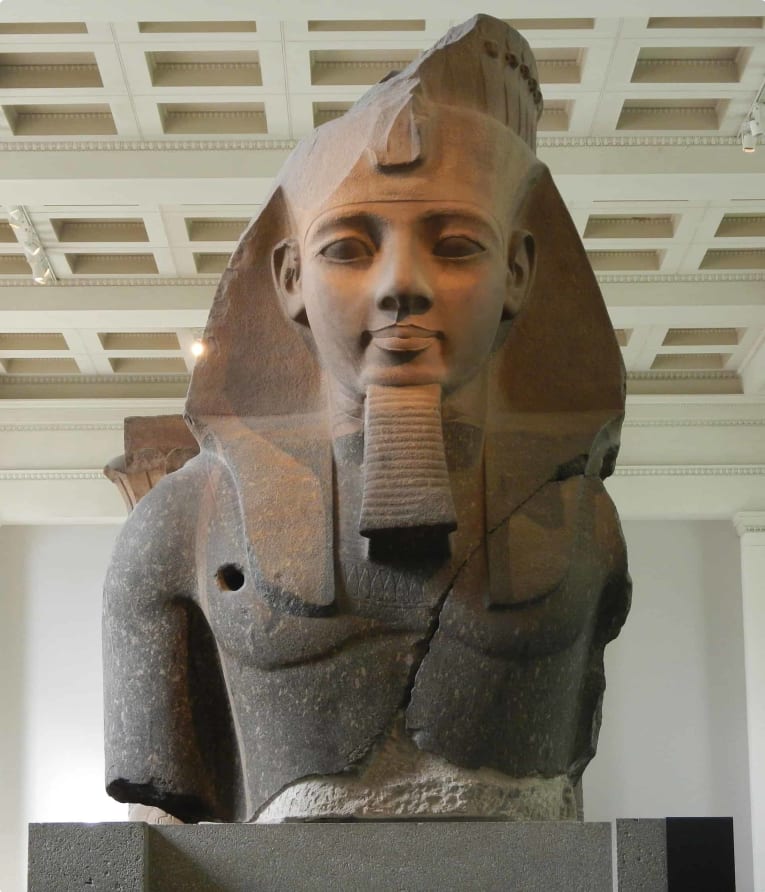
Many historians are quick to point out that Belzoni was not a scholar but an amateur archaeologist and was mainly motivated by the possibility of fame and fortune that accompanied his discoveries. He was not so determined to have a deeper understanding of Ancient Egypt and many have compared the way he sought out hidden treasures to pillaging. While it is true that his techniques were sometimes destructive, he wrote detailed descriptions of his findings and compelling accounts of his adventures, both of which sparked great interest in Ancient Egypt. During this time, much of the general public were ignorant about Egyptian civilisation and Belzoni’s work helped to bring the ancient civilisation to life. Howard Carter, a 19th century Egyptologist we will meet later in this article, described Belzoni as ‘one of the most remarkable men in the entire history of Archaeology’.
Jean-Francois Champollion (1790-1832)
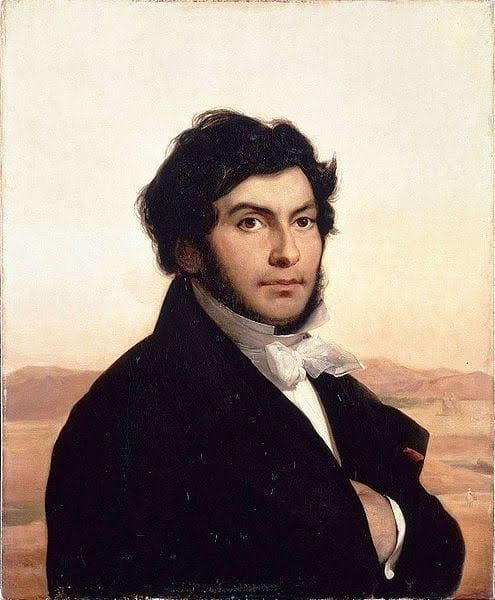
Jean-Francois Champollion is often referred to as the ‘Father of Egyptology’ because of his fundamental role in deciphering hieroglyphics and equipping future scholars, including Lepsius and Carter, with the key to understanding hieroglyphics.
Champollion was a child prodigy and before he was ten, he attempted to teach himself a number of languages, including Hebrew, Arabic, Syriac, Chaldean and Chinese. By the age of 16, he had mastered six ancient Oriental languages, including Persian, Sanskrit and Ethiopic, in addition to Latin and Greek. At 19, he began to work on a dictionary of the Coptic language and became an assistant professor of History at Grenoble. In 1814, he published Egypt of the Pharaohs, or Researches in Geography, Religion, Language and History of the Egyptians Before the Invasion of Cambyses.
Champollion was obsessed with the idea of deciphering hieroglyphics and focused his attention on the Rosetta Stone. In 1822, he published his first breakthrough in the decipherment of the Rosetta hieroglyphs, becoming the first scholar to recognise that some signs were alphabetic, some syllabic, and some determinative (standing for a whole idea or object previously expressed). In 1824, he published a longer thesis on this matter, concerning the ‘hieroglyphic, figurative, ideographic and alphabetic’ systems of Ancient Egypt. His work caused great excitement in the field, allowing others to begin the task of translating Ancient Egyptian texts and engravings.
In 1826, he was appointed director of the Egyptian museum at the Louvre and later conducted his only expedition to Egypt. Returning to Paris in 1831, he was became a Professor in Egyptian History and Archaeology. He died suddenly the following year while still completing his dictionary and grammar of Ancient Egyptian, which was published posthumously.
During his lifetime and long after his death, there were debates over the accuracy and merits of his decipherment. Some have criticised him for not giving credit to the work of Thomas Young before him but generally, Champollion’s work is universally accepted and has been the basis for further study into hieroglyphics. His achievements have allowed for a richer understanding of Egyptian history and the power of his work endures to this day.
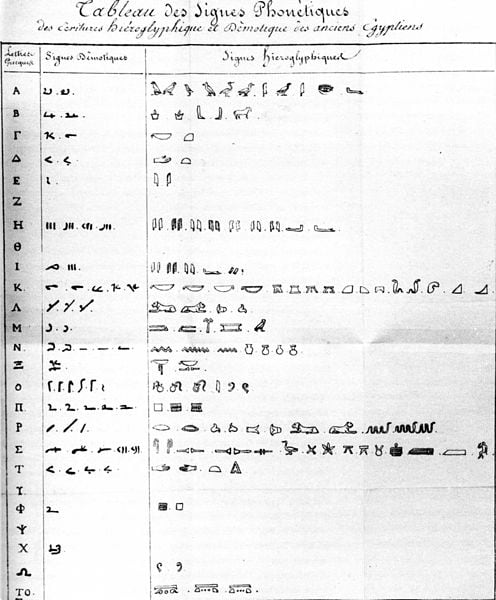
Karl Richard Lepsius (1810-84)

Karl Richard Lepsius was a Prussian philologist, linguist and modern archaeologist who is recognised as one of the first great Egyptologists due to his cataloguing of Egyptian archaeological remains and his chronology of Egyptian history. Hailing from Naumberg an der Saale, he studied philology (the study of language in oral and written historical sources) at Leipzig, Gottingen and Berlin before moving to Paris where he attended lectures about Ancient Egypt. With the publication of Jean-Francois Champollion’s Egyptian Grammar, Lepsius was confident that a suitable foundation had been laid in order for him to make a meaningful difference in Egyptology.
He spent some years in Rome working as the secretary a the German Archaeological Institute and soon suggested improvements to Champollion’s Grammar, publishing an article on alphabetic signs in hieroglyphics in 1837. The article was considered to be one of the most important contributions to the understanding of Ancient Egyptian. He also spent four years visiting the major European collections of Egyptian antiquities, in Holland, England and Italy in order to educate himself and develop his knowledge of all things Egyptian. By 1839, he was appointed Professor Extraordinary of Egyptology at the University of Berlin.
In 1842, under the patronage of Frederick William IV of Prussia, Lepsius led an expedition to Egypt and Nubia (Sudan) with the aim of recording and exploring more of Ancient Egypt. Lepsius was accompanied by nine team members and Mohammed Ali, the Viceroy of Egypt, granted explicit permission to the group to excavate any site they desired and to take any objects found back to Berlin.
Lepsius was cognizant of the fact that previous missions had failed to properly record many of the monuments around Cairo and was careful not to make the same mistakes. He spent the first six months of his mission carefully excavating and exploring 30 previously unknown pyramids, finding evidence that some pyramids dated back to 3000 BC. He also studied 130 oblong burial structures known as mastaba tombs and examined the Giza pyramids. From here, Lepsius and his team travelled to the Fayum Oasis, then south to Middle Egypt and Luxor before heading to Nubia. By the time they returned to Trieste, Italy in January 1846, they had recovered 15, 000 objects and also executed thousands of drawings, inscriptions, site plans and maps. While today, the removal of 15,000 objects is considered extreme, Lepsius saw his work as ‘rescue work’. He said he would rather remove the objects than leave them to be destroyed.
The result of the expedition was the publication of Denkmäler aus Aegypten und Aethiopien (Monuments from Egypt and Ethiopia), a 12-volume compilation of nearly nine hundred plates accompanied by text. The value of this work endures today, serving as a fundamental resource on monuments in both Egypt and Nubia. Not only are the maps, plans and drawings of tombs and temples extremely accurate, but it details some sites that have since been destroyed or buried beneath sand. During the expedition, Lepsius also compiled the Lepsius list of pyramids, the first attempt to systematically list all the Egyptian pyramids. This also featured in his end work.
Lepsius’ contribution to Egyptian monuments, language and mythology cannot be understated. Though some of his techniques today would have horrified modern archaeologists, his pioneering efforts formed the basis of much of modern Egyptology. As well as this, he contributed to understanding of the geography of northern Africa with his precise recording, taking care to note all the details of his team’s travel throughout their expedition. Lepsius died in 1884, publishing many more works in his later life and succeeding in putting Berlin Museum on the map in the field of Egyptology.
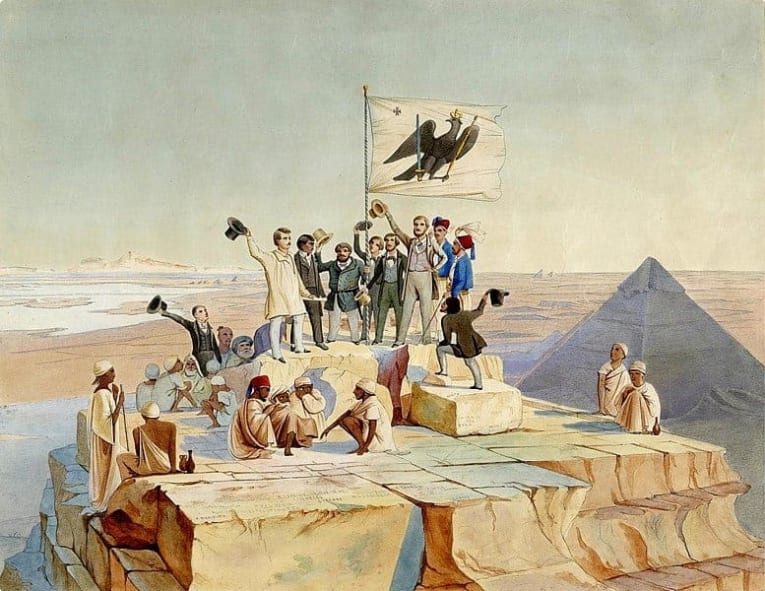
Auguste Mariette (1821-81)

Similar to Belzoni and Lepsius before him, Auguste Mariette, a French scholar and archaeologist, has been criticised for his illegal excavations of Egypt. However, he continues to have a significant influence on the study of Ancient Egypt and, paradoxically, is recognised for eventually helping to set in place a framework for the protection of Egyptian heritage.
Mariette was born in Boulogne-sur-Mer and was recognised as a child for his artistic talent, proving to be a talented draftsman and designer in his early adulthood. In 1842, when Mariette was 21, his family was bequeathed the travel diaries and notes of a distant relative, Nestor l’Hote who had travelled to Egypt with Jean-Francois Champollion. Mariette became fascinated with these materials and began the task of sorting the papers, teaching himself Coptic and trying to make a name for himself in the field of Egyptology. He eventually found a position with the Louvre and in 1850 set out for Egypt with the task of purchasing Coptic, Ethiopic and Syriac manuscripts to be displayed in the museum.
Mariette had little success in acquiring manuscripts and unwilling to return to France empty-handed, he decided to start an (illegal) excavation, funded by the Louvre but without their knowledge. He based himself at Saqqara, which site initially looked like ‘a spectacle of desolation’, but after noticing a sphinx he decided to explore the area. This led to the infamous discovery of the ruins of the Serapeum (the cemetery of the sacred Apis bulls). Continuing his excavations, Mariette found thousands of statues, bronze tablets, other treasures, and one intact sarcophagus at Saqqara and remained in Egypt for four years, excavating and sending his findings back to the Louvre. Due to conflict with the Egyptian authorities over the legality of his digs, he often excavated at night and in secret.
When Mariette returned to France he was installed as a curator at the Louvre but soon became disheartened with academic life. He is quoted as saying ‘I knew I would die or go mad if I did not return to Egypt immediately’ and by 1858 he returned to Egypt on the insistence of the Sa’id. Mariette became Director of the newly resurrected Department of Antiquities and his career blossomed. Rather than his loyalties lying with France, Mariette was focused on stopping clandestine digging and protecting the Egyptian heritage. Under his guidance, the department eliminated unauthorised excavation, restricted the sale and export of antiquities, gained funds to open the museum in Cairo at Bulaq in 1863 and conducted countless excavations across the country.
However, Mariette’s record-keeping abilities were poor and his workload soon became impossible to manage. After the death of his wife and daughter, he fell into a depression from which he never properly recovered. He became ill and died in 1881. In 1878, his museum was ravaged by floods, which destroyed most of his notes and drawings. However, despite a lack of physical evidence for his work, he is still remembered today for his determination to keep Egyptian antiquities in Egypt and the founding of the Museum of Cairo. His efforts to protect Egypt’s sites and monuments was unlike archaeologists before him and added to the notion that the artefacts of Ancient Egypt should stay in the country in which they were found.
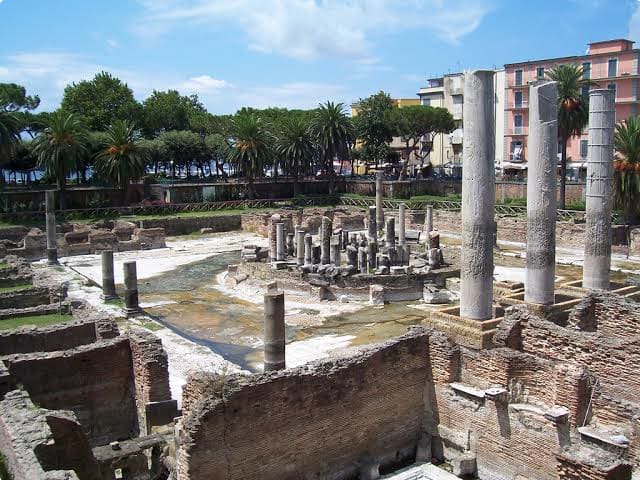
Howard Carter (1874-1939)
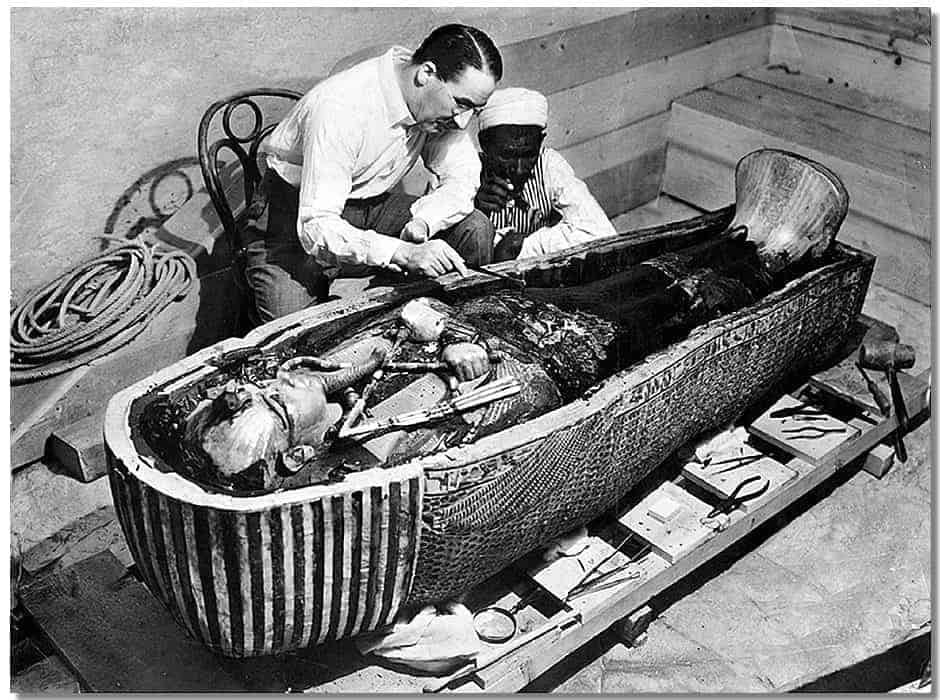
A British archaeologist, Howard Carter became world-famous in 1922 after discovering the intact tomb of the 18th Dynasty Pharaoh, Tutankhamen (King Tut). It remains the only virtually intact royal burial to have been found in the Valley of the Kings. However, even before the discovery, Carter had a long and interesting career, first arriving in Egypt at only 17.
Carter’s father Samuel was a successful artist and Carter inherited his father’s drawing abilities. In 1891, he was sent by the Egypt Exploration Fund to assist the Egyptologist Percy Newberry as a draughtsman. In this role he helped to record details of the Middle Kingdom tombs at Beni Hasan. Through this job, Carter was able to find more work in Egypt and for the next several years, he worked under different archaeologists at excavation sites including Amarna, Deir el-Bahari, Thebes, Edfu and Abu Simbel. In 1899, at just 25, he was appointed Chief Inspector of Monuments for Upper Egypt and Nubia. He was based in Luxor and spent much time updating the Valley of the Kings, installing electric lighting and facilitating tourism.
In 1907, Lord Carnarvon employed him to help supervise excavations of nobles’ tombs in Deir el-Bahri, near Thebes and it was under Carnarvon’s patronage that the pair found Tutankhamen’s tomb. Carter and his team began their excavations in October 1922 near the entrance of Ramesses VI’s tomb. They eventually found a plastered doorway and forced a tiny opening which revealed a passage beyond. Carter realised that this meant an intact burial could lie at the end of the passage and over the next two weeks his workmen cleared the passageway. However, a second doorway bore evidence that it had been opened and resealed before, sparking fears that whatever was inside the tomb had already been taken. On 26 November, Carter forced a tiny breach in the second doorway, illuminating the tomb with a candle. The story goes that standing behind him and desperate for news, Carnarvon asked ‘Can you see anything?’, and Carter, still stunned by what lay before him, replied softly ‘Yes, wonderful things.’
The discovery catapulted Carter into the spotlight and for the next 10 years, on-and-off, Carter supervised the removal of the tomb’s contents, most of which are housed today in the Egyptian Museum in Cairo. However, the stress of the media attention and the pressure of Carter’s job led to a rift between Carnarvon and Carter. The pair reconciled by the time of Carnarvon’s death less than a year later in 1923 but tensions brewed between Carter and the Egyptian authorities. In 1924, he was barred from the tomb after unlawfully sealing it amid conflict with the Egyptian authorities. He regained his concession in 1925 but was quickly gaining a reputation for being stubborn and undiplomatic. When the tomb was finally empty in 1928, the publication of Carter’s work became his top priority. However, his health was starting to fail and his colossal six-volume report was never completed. Carter died in London on 2 March 1939.
Tutankhamen is the only monarch from the New Kingdom (1550-1070 BC) to be discovered undisturbed in his own sarcophagus. He died at just 20 years old, before his tomb was complete, so was interred in a courtier’s tomb. While his tomb had been robbed before it was found by Carter, its discovery offered a whole new understanding of the New Kingdom and the ability to make sense of life during this period. Carter will forever be associated with the discovery of the greatest treasure trove of artefacts from Ancient Egypt and resurfacing the story of the boy king.
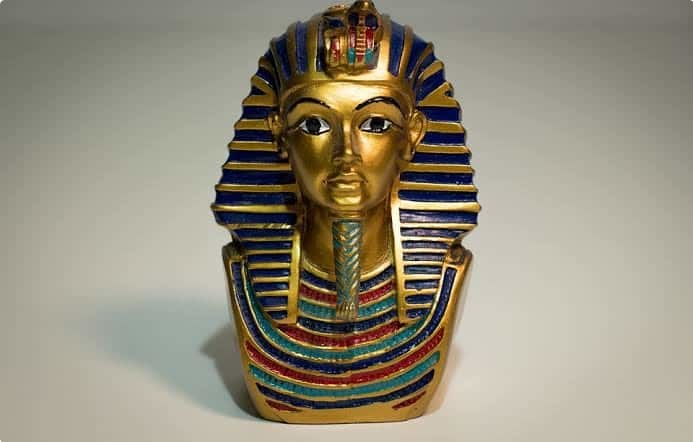
William Matthew Flinders Petrie (1853-1942)

William Matthew Flinders Petrie was an English Egyptologist, recognised for his systematic methodology in archaeology and preservation of artefacts. He is often referred to as the father of Egyptian archaeology and held the first Chair of Egyptology in Britain, encouraging scientific rigour and innovation in excavation projects.
Petrie was born into a family of devoted Christians. His mother, who was interested in science and collecting fossils and minerals, instilled in him a love of intellectual pursuits while his father, a civil engineer and surveyor, taught him the importance of accurate surveying. This would lay the foundation for Petrie’s career excavating and surveying ancient sites in Egypt. He toured southern England with his father, surveying sites such as Stonehenge and at the age of 24, he published Inductive Metrology; or, The Recovery of Ancient Measures from the Monuments. The work represented a new approach to archaeological study that focused on context and accuracy.
Petrie and his father then travelled to Egypt to survey the ancient pyramids and eventually he gained a position as an archaeologist with the Egypt Exploration Fund. The EEF funded important excavations and Petrie examined important archaeological sites in Egypt such as Abydos and Amarna, quickly gaining a reputation for his meticulous style of research. In 1892, after years of hard work, Petrie was made Edwards professor of Egyptology at University College London, despite having had no formal education. He served in the position until 1933. In 1894 he founded the Egyptian Research Account, which in 1905 became the British School of Archaeology. Doing so allowed him not only to fund excavations and train students, but also meant he could pass on his knowledge, experience and techniques to budding Egyptologists.
In his later work, Petrie became interested in Palestine and moved permanently to Jerusalem, where he died aged 89 in 1942. While his body was interred in the Protestant Cemetery on Mount Zion, Petrie donated his head to the Royal College of Surgeons in London for examination given his intellectual capacity.
Today, his legacy has changed the way archaeologists treat objects, emphasising the fact that even the most mundane-seeming object can offer an insight into the past and become a significant artefact. His painstaking recording methods created new frameworks and standards for the discipline and his academic work saw a whole new generation of Egyptologists become interested in Ancient Egypt. Today, many artefacts he recovered can be found in museums across the world. He taught his students to be scientifically rigorous in their collection methods and it is thanks to him that more care was taken in recovering artefacts and making sense of their context.
The Future of Egyptology
Today, Egyptology is still a thriving field of study with many universities and colleges offering degrees in Egyptology, including Yale University, the University of Oxford and the University of Cambridge. The discipline has widened since the 20th century, with many more women becoming involved in the study of Egyptology. Today, the story of Ancient Egypt has become instructive, as many scholars try and make sense of how such a civilisation existed for so long only to be followed promptly by abrupt extinction. Clues about what happened in Ancient Egypt lie scattered across the country from Cairo to Luxor and Luxor to Aswan, hinting at how this Pharaonic civilisation once lived.
Travellers to modern Egypt can still marvel at its ancient wonders and take in the dazzling treasures housed at the Egyptian Museum in Cairo. History lovers can admire sand-covered tombs, majestic pyramids and Pharaonic temples. You can travel to Aswan and visit the Philae Temple on the island of Philae or cruise down the Nile in a felucca ride. Other highlights of Egypt include the breathtaking temple of Kom Ombo, the Luxor Temple built in 1400 BC, Wadi Rum or the Valley of the Moon and the biblical Orthodox Monastery of St Catherine, a UNESCO World Heritage Site. Equally fascinating and beautiful, there are plenty of reasons to visit Egypt. The history of this country stretches back for millennia and a small group tour is one way to be able to further understand the richness of the history and the culture of this country. As well as being steeped in history, Egypt is also home to beautiful and breathtaking landscapes. For nature lovers, the Red Sea is teeming with over 1200 species of fish and 250 species of coral, many of which are endemic. From desert plains to luxury beaches and fertile valleys, the landscape is sure to awe you. If this has captured your imagination and sparked your interest in Egyptology, please click here for our Egypt tour and consider our escorted tours of Egypt.
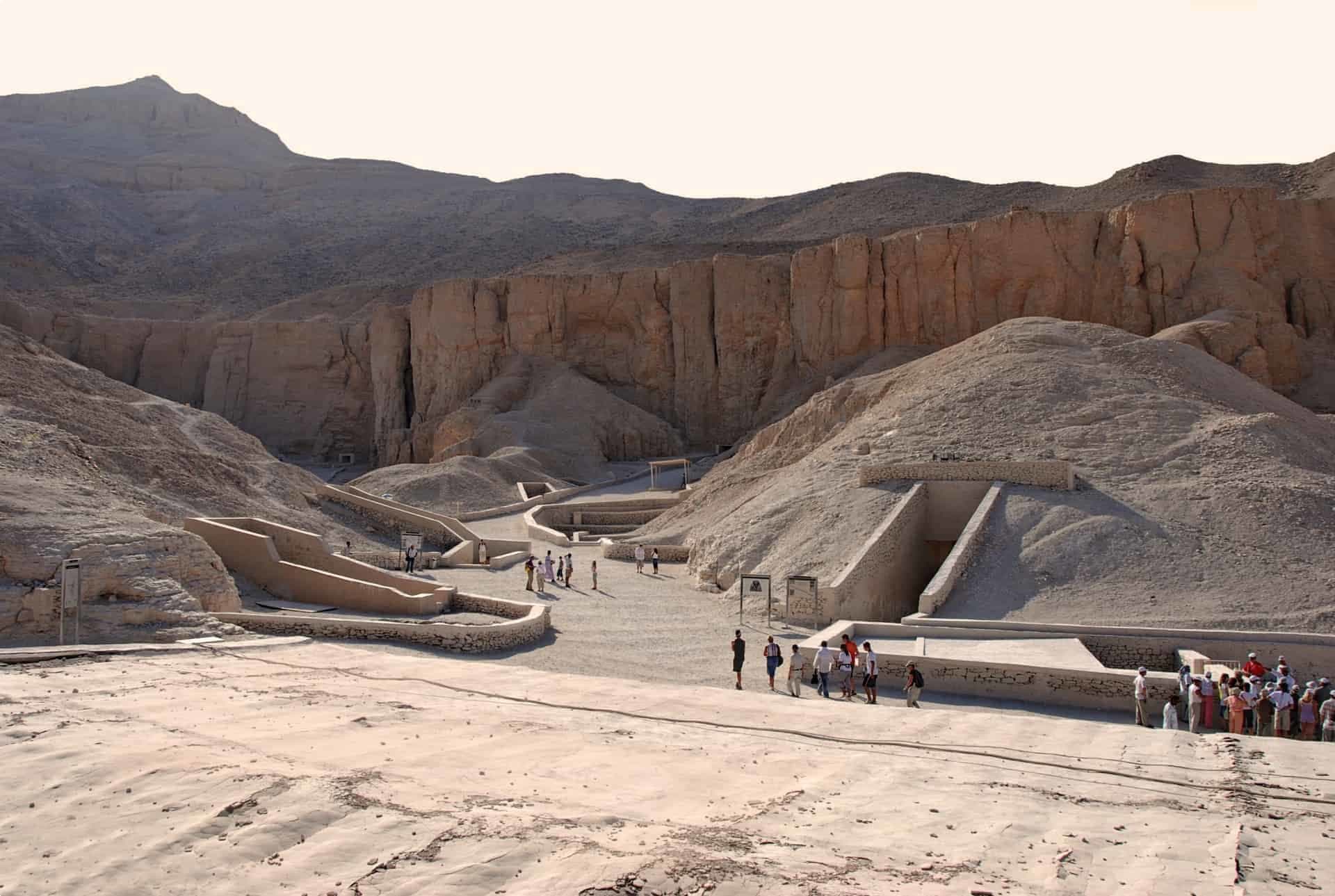
Articles published by Odyssey Traveller about Egypt.
The following articles may also be of interest:
- From Cairo to NAC: Egypt builds a new capital city
- Discover Egypt with 10 great books
- Egyptian Linen Treasures
- Top 20 World Heritage Sites You Must Visit
- Julius Caesar and Cleopatra’s Relationship
- Egypt the country. A country profile from Odyssey.
- More small group tours to Africa
Links to External Related Articles About Egypt.
Learn more about Egypt before you travel with these articles and links to external sites.
Related Tours
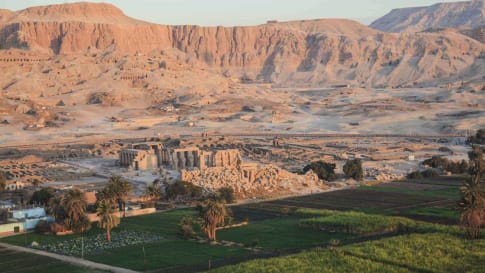
18 days
Nov, JanEgypt tour: escorted small group history & cultural tour of Egypt
Visiting Egypt
Our small-group program, designed for senior couples and solo travellers, offers a rich journey through Egypt's past and present. You'll explore modern marvels like the Aswan Dam and immerse yourself in pivotal sites such as Tahrir Square, both key to understanding Egypt’s enduring influence on civilization. This tour is proof that Egypt remains a vital crossroads of history and culture. We explore Egypt's fairy-tale natural beauty, its ancient history, and Imperial heritage, its World Heritage Sites, and world famous cities, all with some truly spectacular scenery along the way. For those seeking an even deeper experience, we also offer opportunities to extend your travels with our tours in Morocco, Jordan, or Tunisia before beginning your Egyptian adventure.
From A$12,950 AUD
View Tour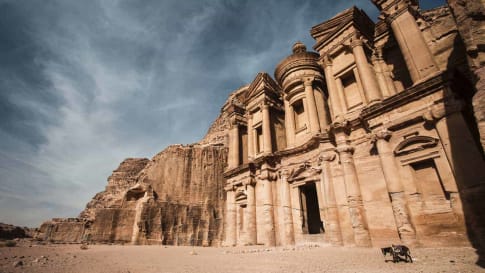
9 days
Jan, OctAncient History of Jordan | Escorted Small Group Tour
Visiting Jordan
Explore Jordan, visiting its capital city, Amman Jordan, the ancient Desert Castles, Petra and the Dead Sea on a small group package tour for mature and senior travellers travelling as a couple or Solo.
From A$6,750 AUD
View Tour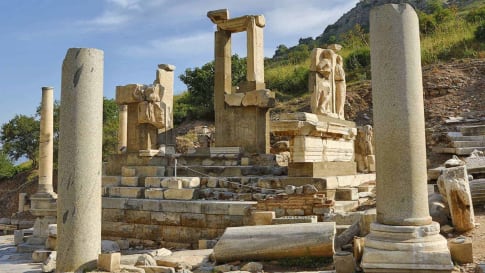
21 days
Apr, AugSmall group tour of Ancient Turkey
Visiting Turkey
As a travel company we seek to keep guests off the beaten path. Trips that are remembered for authentic experiences. Our small group journeys in Turkey are fully escorted by an experienced local guide and an Odyssey guide to give this type of experience whether at one of the many UNESCO World heritage sites explored or local bazaars. It is always about the adventure and memories that we will create.
From A$17,295 AUD
View Tour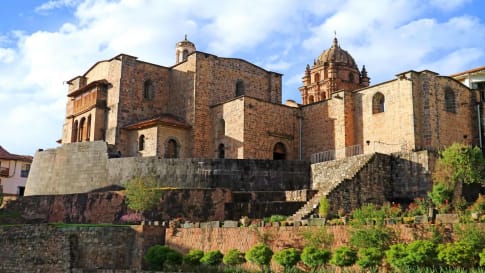
22 days
Mar, AprEcuador and Peru Archaeology tour
Visiting Ecuador, Peru
This 22-day small group tour highlights the most prominent ancient ruins and archaeological finds across Ecuador and Peru and showcases the vast culture and impact of pre- and post-Inca civilization.
From A$16,250 AUD
View Tour